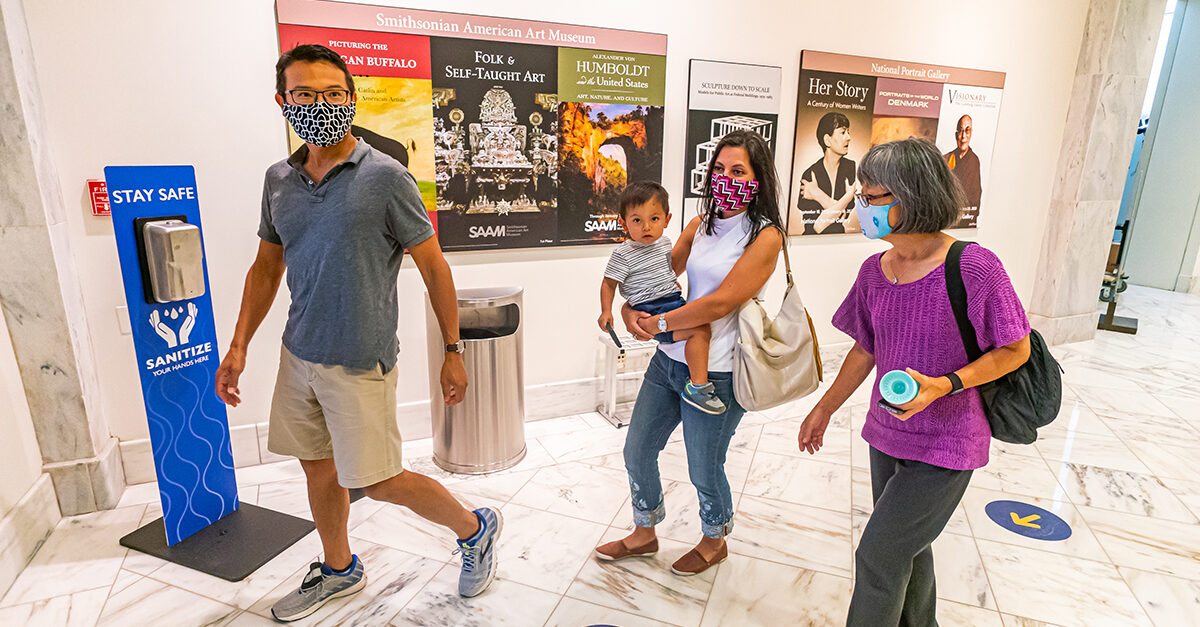Facility managers and service providers at public buildings—such as museums—have become adept at navigating the coronavirus pandemic. Workers in these large, often dated facilities that house precious collections and accommodate millions of visitors have their hands full in non-pandemic years. The past year has added extra challenges.
Staff at the Smithsonian Institution—the world’s largest museum, education, and research complex with 19 museums and the National Zoo, with facilities located in Washington, D.C., New York City, and Chantilly, Virginia—rose to the challenge. All staff who were able to work from home did so during the pandemic, according to Richard Wright, director of the Smithsonian’s Office of Safety, Health, and Environmental Management. A small portion continued to work on-site to support essential facility operations and protect the collections, including the animals at the zoo.
“We’re extremely grateful to all employees conducting this essential work, and we’ve put many new safety precautions in place to keep them safe,” said Wright, who is also deputy coordinating officer of the COVID-19 Response Team and chair of the institution’s Reopening Task Force.
Protecting staff
On-site staff conduct a daily self-check of their health, following the Smithsonian’s policy to stay home if they’re sick. If they are healthy enough to come to work, they wear the appropriate face coverings, practice social distancing, and wash and sanitize their hands regularly.
“If employees self-identify as having a medical condition that makes them vulnerable to COVID-19, they are currently asked to stay home and paid their normal salary,” Wright said.
Smithsonian facility staff have made adaptations to the buildings to protect employees and remind them to follow safety protocols. The workers installed protective safety shields in areas where people would normally come face-to-face and set up directional guidance and signs throughout the complexes to help staff follow social distancing. They also set guidelines reducing occupancy in break rooms and other staff areas and mandating adherence to a risk assessment and mitigation process for employees involved in group activities.
To assure the Smithsonian was following best practices for cleaning and disinfecting, about 300 of the Institution’s custodial and maintenance workers completed the ISSA Cleaning Management Institute’s (CMI) Custodial Technical Training and Certification program by December.
Protecting visitors
As the Smithsonian Institution formalizes plans for reopening its museums, it will put many of the same safety measures in place for its visitors as it did for its staff: requesting that all visitors who are not feeling well stay home, requiring that they wear face coverings, and closely monitoring and limiting the number of museum and zoo guests through reserved, time-entry passes. Visitors will encounter hand sanitizer dispensers throughout the buildings and grounds, as well as signs indicating one-way paths and other directional guidance. Building service providers and in-house staff will conduct more frequent and more thorough cleanings and establish maximum capacities for restrooms.
“For the protection of both our visitors and our staff, we plan to take a slow, gradual approach to reopening across the institution, with close and careful monitoring of a variety of public health and operational criteria,” Wright said. “While it’s too soon to tell whether any of these precautions will become permanent, we will evaluate these procedures on an ongoing basis to ensure we continue to provide a safe environment for staff and visitors alike.”




